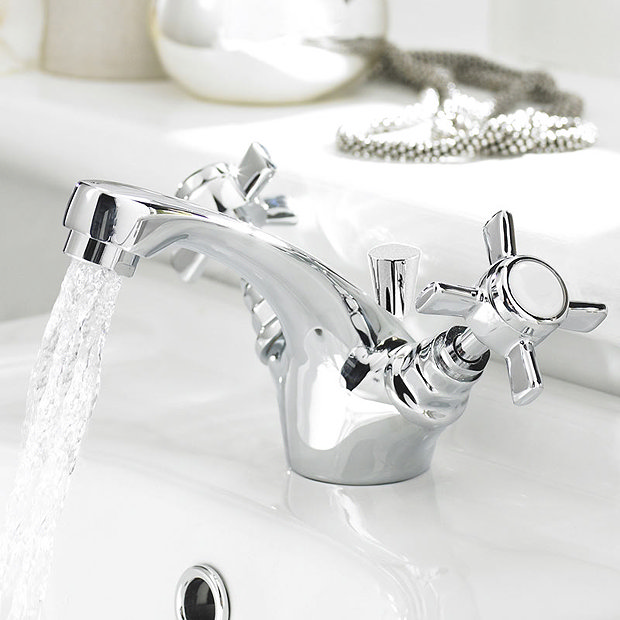Introduction:
Bathroom sink mixer taps play a pivotal role in both functionality and aesthetics, serving as a focal point in any bathroom. As we delve into the diverse market of mixer taps available in the UK, it’s crucial to understand the various types, materials, features, and considerations that can influence your choice. This comprehensive guide aims to assist you in making an informed decision, ensuring that your bathroom not only meets your practical needs but also reflects your style.
I. Types of Bathroom Sink Mixer Taps:
A. Single Lever Mixer Taps:
Single lever mixer taps are known for their simplicity and ease of use. With a single handle controlling both water flow and temperature, they offer convenience and contemporary design. Installation and maintenance tips ensure longevity and trouble-free operation.
B. Two-Handle Mixer Taps:
For those who appreciate a classic touch, two-handle mixer taps provide separate controls for hot and cold water. Explore the various design options within this category to find the perfect fit for your bathroom.
C. Wall-Mounted Mixer Taps:
Wall-mounted mixer taps save space and offer a modern aesthetic. Discover the advantages and considerations associated with this installation type, ensuring compatibility with different sink types.
II. Materials and Finishes:
A. Common Materials Used:
Dive into the characteristics of materials such as brass, stainless steel, and chrome. Learn how these materials impact durability and aesthetics.
B. Popular Finishes:
From polished to matte finishes, explore the visual effects and maintenance considerations of different surface treatments, allowing you to choose a tap that complements your bathroom style.
III. Features and Innovations:
A. Water-Saving Technology:
Stay environmentally conscious by understanding water-saving technologies integrated into modern mixer taps.
B. Temperature Control and Safety Features:
Ensure safety and comfort with temperature control features and safety mechanisms that prevent scalding.
C. Touchless or Sensor-Activated Mixer Taps:
Embrace technology with touchless or sensor-activated mixer taps, providing a hygienic and convenient solution for handwashing.
IV. Considerations for Choosing Bathroom Sink Mixer Taps:
A. Sink Compatibility:
Determine the right mixer tap based on the type and design of your sink.
B. Bathroom Style and Aesthetics:
Explore how different mixer taps complement various bathroom styles, from traditional to contemporary.
C. Budgetary Constraints:
Find a balance between features and cost to ensure a satisfactory investment.
V. Installation and Maintenance:
A. Professional Installation vs. DIY:
Weigh the pros and cons of professional installation and DIY options.
B. Cleaning and Care Tips:
Follow essential cleaning and maintenance tips to keep your mixer tap in optimal condition.
C. Troubleshooting Common Issues:
Learn quick fixes for common problems, ensuring a hassle-free experience.
VI. Brands and Market Trends:
A. Overview of Leading Mixer Tap Brands:
Explore reputable brands in the market, known for quality and innovation.
B. Emerging Trends in Bathroom Sink Mixer Tap Designs:
Stay ahead of the curve with insights into the latest design trends shaping the industry.
VII. Customer Reviews and Ratings:
A. Importance of User Feedback:
Understand the significance of customer reviews in making an informed decision.
B. Online Platforms for Researching Reviews:
Discover reliable online platforms for researching and comparing user reviews.
VIII. Regulations and Standards:
A. Compliance with UK Water Regulations:
Ensure that your chosen mixer tap complies with UK water regulations for safety and legal adherence.
B. Certification and Quality Assurance:
Look for certifications and quality assurances to guarantee the reliability of your purchase.
FAQs:
Q1: How do I choose the right type of mixer tap for my bathroom?
A1: Consider your preferences, sink type, and bathroom style. Single lever taps offer simplicity, while two-handle taps provide a classic look. Wall-mounted taps save space and offer a modern touch.
Q2: Are touchless mixer taps worth considering?
A2: Yes, touchless or sensor-activated mixer taps provide a hygienic and convenient solution for handwashing, reducing the risk of germ transmission.
Q3: What materials are best for mixer taps?
A3: Common materials include brass, stainless steel, and chrome. Each has its characteristics, impacting durability and aesthetics.
Q4: How can I troubleshoot common issues with my mixer tap?
A4: Refer to the manufacturer’s guidelines for specific troubleshooting tips. Common issues include leaks, low water pressure, or temperature control problems.
X. Conclusion:
In conclusion, navigating the world of bathroom sink mixer taps in the UK requires careful consideration of various factors. By understanding the types, materials, features, and installation aspects, you can make an informed decision that aligns with your practical needs and aesthetic preferences. Whether you opt for a classic two-handle tap or embrace the modern convenience of touchless technology, this guide equips you with the knowledge to transform your bathroom into a functional and stylish space.

A group of home improvement enthusiasts and bathroom design experts, combines in-depth knowledge and a shared passion to deliver engaging, informative content that guides readers through the world of bathroom innovation and style.

Leave a Reply